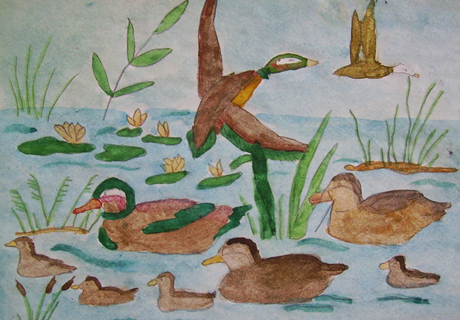The Art of Intelligence
The Art of Intelligence: How Drawing Enhances Children's Skills and Creativity
In the fast-paced digital age, where children are surrounded by screens and technology, the simple act of picking up a pencil and sketching on paper might seem like a quaint pastime. However, the benefits of drawing extend far beyond producing pretty pictures; it plays a pivotal role in the holistic development of a child. Beyond nurturing creativity, drawing has been proven to enhance children's skills and contribute to the growth of their general intelligence.
- Fine Motor Skills Development:
Drawing involves intricate hand movements, requiring children to control their fingers and manipulate a pencil with precision. These fine motor skills are crucial for various everyday activities, such as writing, typing, and even buttoning a shirt. The act of drawing helps refine these motor skills, laying a foundation for improved dexterity in various aspects of life.
- Cognitive Development:
The process of transforming thoughts and ideas into tangible drawings stimulates cognitive functions in children. It encourages them to think critically, plan, and make decisions. As they visualize their ideas on paper, they engage in problem-solving activities, fostering cognitive growth. This mental exercise is instrumental in the development of analytical and strategic thinking, skills that are invaluable in academic and real-world scenarios.
- Enhanced Creativity:
Drawing is a powerful tool for self-expression, allowing children to convey their thoughts, feelings, and imaginations visually. When encouraged to explore their creativity through art, children develop a sense of identity and learn to express themselves more effectively. This creativity extends beyond the realm of art and can positively influence other aspects of their lives, such as problem-solving, innovation, and adaptability.
- Improved Concentration and Focus:
Engaging in the act of drawing requires sustained attention and focus. Children learn to concentrate on the task at hand, shutting out distractions and honing their ability to stay engaged in an activity for an extended period. This improved attention span has a direct impact on academic performance, as children become better equipped to absorb and process information.
- Spatial Awareness and Geometry:
Drawing inherently involves an understanding of space, proportions, and geometry. Whether it's sketching a landscape or creating a simple doodle, children unconsciously develop spatial awareness as they translate their mental images onto paper. This spatial understanding is foundational for mathematical concepts and architectural thinking.
- Language Development:
Through drawing, children often create narratives and stories. This storytelling aspect of drawing contributes to language development by enhancing vocabulary, sentence construction, and communication skills. As children narrate their drawings, they build a bridge between the visual and verbal aspects of communication, fostering a more comprehensive language acquisition.
In conclusion, drawing is not merely a recreational activity for children; it is a powerful tool that contributes significantly to their overall development. From fine motor skills and cognitive growth to enhanced creativity and improved concentration, the benefits of drawing are manifold. Encouraging children to embrace their artistic inclinations not only allows for the expression of creativity but also cultivates a foundation for success in various academic and real-world endeavors. As we celebrate the joy of a child's doodles and sketches, let us recognize the profound impact drawing has on shaping the future minds of our youth.
Read more about our classes - Art for kids


